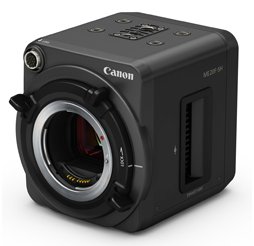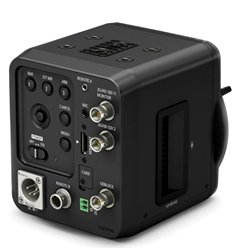The last Trapper

An interesting film about the last Trapper, Norman Winther, who lives in the Yukon area, in a self-made wooden house in the wild with his wife, May Loo, with two horses, and several sled-dogs.
In the last years Sigma recreates itself. They released some legendary lenses like the Sigma 35mm f/1.4 Art or the Sigma 18-35mm f/1.8 Art or the Sigma 50mm f/1.4 Art. Many of these lenses are class leading lenses unprecedented before.
Many people now interested which will be the next Sigma Art series lens ?
[do_widget Text]
The two recently released lenses are the Sigma 24-35mm f/2 Art and the Sigma 24mm f/1.4 Art lenses. Currently Photozone.de tested the Sigma 24 f/1.4mm on a 50 megapixel Canon 5ds camera. According to them it is a very sharp lens but the corners wide open are not so sharp, must stop down the lens to f/2.8 – f/4 range in order to get sharp corners. It is more complicated lens to design, but seems it is similar to the Canon 24mm f/1.4 II. The Sigma 24mm f/1.4 is not as phenomenal as some of it’s earlier cousins, according to photozone.de it is the weakest of the current Sigma Art primes.
The Sigma 24-35mm f/2 Art is a very sharp lens, as currently the lensrentals team tested it. This is a first f/2 Full frame zoom available in the market.
Sigma is keeping to make extraordinary lenses which many says impossible to produce. The next Sigma prime can be the 85mm f/1.4 or the 135mm f/2, which is currently lacks in the Sigma lineup. Obviously Sigma is inspired by the success they experienced and wants to release more and more lenses, mostly primes. Many interested about the 70-200mm f/2.8 which is not very likely. New Sigma lenses also can be used on Sony cameras with a Metabones adapter.
These Rokinon lenses especially designed for film-making. This is why there is a thread on the lens barrell. These lenses has a bright T1.5 aperture (Transmission value this is used in cinema instead of f-stops). The lenses has a very solid built from metal, internal focusing, but no electrical coupling with the camera, means no lens data like aperture in Exif and only manual focusing is available.
[do_widget Text]
These lenses are available in the following mounts:
Canon EF, Nikon F, Sony E, Micro 4/3, PL (usual cinema mount)
The following three lenses are available at the moment (three other are perhaps coming in the future, a wider angle and two longer lenses):
Rokinon 24mm T1.5Only manual focusing, no electrical coupling |
Rokinon 50mm T1.5Only manual focusing, no electrical coupling |
Rokinon 85mm T1.5Only manual focusing, no electrical coupling |
The question is do these lenses different than the Samyang photographic or Cine Ds lenses ?
As I understand these lenses have different coatings but optically identical.

|

|
New Canon camera comes with an ISO 4,000,000 sensitivity, meaning can make pictures in night sky without a flash unit. Other possible usage of this camera is night documentaries, wildlife videos at night and such things. A usual Full frame camera has a native sensitivity of 25,600, how is it compare to the new Canon ME20F-SH ? Each doubling means double amount of light. 25,600 – 51,200 (1 stops) – 102,400 (2 stops) – 204,800 (3 stops) – 408,900 (4 stops) – 817,800 (5 stops) – 1,635,600 (6 stops) – 3,271,200 (7 stops) totally seems around 7.2 stops.
[do_widget Text]
The camera can record HD video. This extreme capability comes with a price which is in this case is 30,000 USD. Why not put this sensor in a Milc camera for 400 USD ? 🙂
The camera has a Full frame 35mm sensor with bigger pixels than the usual cameras sold today. The boxy design won’t make Italian designers envy I guess. At the back of the camera lots of ports can be found.
The camera has an EF lens mounts which makes it quite versatile, any EF lens can be attached from wide angle to extreme telephoto.
The minimum illumination is the camera needed only 0.0005 lux. At Full moon the illumination is 0.25-1 lux.
The pixel pitch is 19 mikrons. This means the camera has around 2.3 Megapixel resolution.
The camera will be available from December 2015.
| Product name | ME20F-SH Multi-purpose Camera | |
| Image sensor | 35mm full-frame CMOS sensor (single), effective pixel count: approx. 2.26 million pixels | |
| Weight | Approx. 2.4 lbs (1.1 kg) (body only) | |
| Body dimensions | Approx. 4 inches (102mm) (w) x 4.5 inches (116mm) (h) x 4.4 inches (113mm) (d) (excluding protrusions) | |
| Minimum subject illumination | Less than 0.0005 lux (at maximum 75 dB gain setting, equivalent to an ISO sensitivity of over four million) | |
| Pixel Pitch | 19 Microns | |
| Lens mount | Canon EF mount (Cinema Lock type) | |
| Optical filters | ND filter with two density levels (motorized manual / auto) IR cut filter (motorized manual) |
|
| Frame rates | 59.94P / 59.94i / 50.00P / 50.00i / 29.97P / 25.00P / 23.98P | |
| Gamma | Canon Log, Wide DR, etc. | |
| Video output terminals | 3G / HD-SDI | BNC jack (output only) Terminal count: 2 1080P / 1080i / 720P |
| HDMI | HDMI connector (output only) | |
| Genlock terminal | BNC jack (input only) | |
| Remote terminal | φ2.5mm stereo mini-mini-jack (Canon-proprietary protocol) Round 8-pin jack (for RS-422, Canon-proprietary protocol) |
|
| Microphone terminal | φ3.5mm stereo mini-jack | |
| AF | One-shot AF | |
| Auto-exposure | Combined interlocking (iris / gain / ND / shutter) | |
| White balance | AWB, color-temperature setting (setting range: 2000 to 15000 degrees Kelvin), natural light, light bulb, Setting A, Setting B | |
| Digital teleconverter | 2x, 4x | |
| Power input | 4-pin XLR DC11-17V Terminal block 2-pin jack DC11-17V |
|
| Operating temperature | 32 degrees F (0 degrees C) to 104 degrees F (40 degrees C) | |
It can sound a little bit negative topic but I thought about it a lot. I don’t want to go in the negative zone too much.
The starting point for this Aps-C FF argument was I feel Canon Aps-C cameras much more downgraded in image departments, than the Nikon counterparts, even at lower isos. (Lots of noise, not so nice colors, etc). For a birder/wildlife photographer a higher end Aps-C would be preferable, Nikon also seems stopped the D300 line to guide folks towards Full frame. I don’t really need Full frame and especially not want to pay a price of a car for a proper wide angle, apart from a super expensive telephoto. It was interesting to read the rave reviews of the new Canon 7d II, which according to my perception still a long way to go to reach the picture quality of the Nikon d7000, but has a professional quick autofocus system.
Recently Canon released the new Canon 5ds and 5ds R cameras, with 50.6 megapixel resolution (I guess the idea of such cameras comes from the marketing department). When I first thought about the new camera I was interested about this huge resolution. To understand the matter a little bit better, I divided the 50.6 by 1.6 (crop factor) and after again by 1.6. The end result is around 20. This megapixel count would be this 50.6 megapixel FF sensor on an Aps-C format (the area is two dimensional this is why need to divide twice).
[do_widget Text]
So in reality the Canon 5ds or 5d R has an up-sized Canon 7d II sensor. So it is more obvious that why the restricted ISO range of the camera. The Canon 5ds and 5ds R has an ISO range of 100-6400, while the Canon 5d3 (or the other Full frame models like the Canon 6d or the Canon 1 DX) has an iso range of 100-25,600.
this is what I expected, but I thought resolution can be better at lower isos. The Canon 5ds is a kind of studio / poster camera, but can be used in wildlife as well.
But the story doesn’t ends there. Dxo measured both cameras, and the results can be checked below:
| Camera | Canon 5ds | Canon 5ds R | Canon 7d II |
|---|---|---|---|
| High ISO: | 2381 | 2308 | 1082 |
| Color depth: | 24.7 | 24.6 | 22.4 bits |
| Dynamic range: | 12.4 Ev | 12.4 Ev | 11.8 EV |
The two camera with the same pixel size behaves completely differently. The Full frame myth (bigger pixels, better quality) has nothing to do with reality. The Canon 5ds has more than one stop advantage in high isos over the Canon 7d II, although they share the same pixel size (the 5ds pixels a tiny bit bigger). In fact the new Canon 5ds almost equals the Full frame 6d in this regard according to DXo measurement. The two camera has been released almost at the same time.
But don’t focus only on Canon let’s check Nikon as well. Nikon released the D800/D800e/D810 cameras. The 36 megapixel is essentially the same regarding pixel pitch to a 16 megapixel Aps-C or Dx sensor. So how the Nikon d7000 fares against the Nikon d800? We see the same things. The better quality has nothing to do with a pixel size.
| Camera |
Nikon D800 |
Nikon D7000 |
|---|---|---|
| High ISO: | 2853 | 1167 |
| Color depth: | 25.3 | 23.6 |
| Dynamic range: | 14.4 | 13.9 |
The Nikon d800 simply works as a usual Full frame camera, regarding DXO results, much better than the Nikon d7000 with a same pixel count.
There is an argument about the size of the sensor as well with the same pixel density. For example a 8Mp Aps-C camera has the same sized pixels as a 20 Megapixel FF camera (For example Canon 30d and the Canon 5d Mk II). Here between these two Canon models the difference is huge.
But for example the excellent Canon 5d is almost catched by a 24 Megapixel Nikon DX camera in high iso department. At the other two areas bettered according to measurement. The story otherwise is much more complicated than these numbers, what is really count how the end results looks. At resolution the Nikon wins hand down I think, but in look, many prefer the “Canon look” over the “Nikon look”. To add a little bit more info, the Nikon desaturate higher isos, and the real iso of the old Canon is much higher at higher sensitivities. The Nikon has better software for noise reduction.
| Camera |
Nikon D7200 |
Canon 5d |
|---|---|---|
| High ISO: | 1333 | 1368 |
| Color depth: | 24.5 | 22.9 |
| Dynamic range: | 14.6 | 11.1 |
What do you think ?